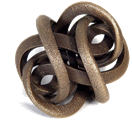Annotation:Honeycomb Rock (The): Difference between revisions
(Created page with "[[{{BASEPAGENAME}}|Tune properties and standard notation]] ---- <p><font face="garamond, serif" size="4"> '''HONEYCOMB ROCK, THE'''. Old-Time, Breakdown. USA, Pennsylvania. G Maj...") |
No edit summary |
||
| Line 2: | Line 2: | ||
---- | ---- | ||
<p><font face="garamond, serif" size="4"> | <p><font face="garamond, serif" size="4"> | ||
'''HONEYCOMB ROCK, THE'''. Old-Time, Breakdown. USA, Pennsylvania. G Major. Standard tuning (fiddle). AABB. Bayard says this tune is a form of a British dance tune called "[[Push About the Jorum (1)]]," AKA "[[Rowan Tree (1) (The)]]," and "[[Rattle the Bottles]]." Bayard says it takes its name from some form of the associated rhyme: | '''HONEYCOMB ROCK, THE'''. AKA and see "[[McClellantown Hornpipe (The)]]." Old-Time, Breakdown. USA, Pennsylvania. G Major. Standard tuning (fiddle). AABB. Bayard says this tune is a form of a British dance tune called "[[Push About the Jorum (1)]]," AKA "[[Rowan Tree (1) (The)]]," and "[[Rattle the Bottles]]." Bayard says it takes its name from some form of the associated rhyme: | ||
<blockquote> | <blockquote> | ||
''I went to see the widda', and the widda' wasn't home;''<br> | ''I went to see the widda', and the widda' wasn't home;''<br> | ||
Revision as of 02:01, 14 November 2011
Tune properties and standard notation
HONEYCOMB ROCK, THE. AKA and see "McClellantown Hornpipe (The)." Old-Time, Breakdown. USA, Pennsylvania. G Major. Standard tuning (fiddle). AABB. Bayard says this tune is a form of a British dance tune called "Push About the Jorum (1)," AKA "Rowan Tree (1) (The)," and "Rattle the Bottles." Bayard says it takes its name from some form of the associated rhyme:
I went to see the widda', and the widda' wasn't home;
I went to see her daughter, and she gave me honeycomb.
(Bayard, 1944).
Source for notated version: Irvin Yaugher Jr., Mt. Independence, Pennsylvania, October 19, 1943 (learned from his great-uncle) [Bayard].
Printed sources: Bayard (Hill Country Tunes), 1944; No. 11A.
Recorded sources:
